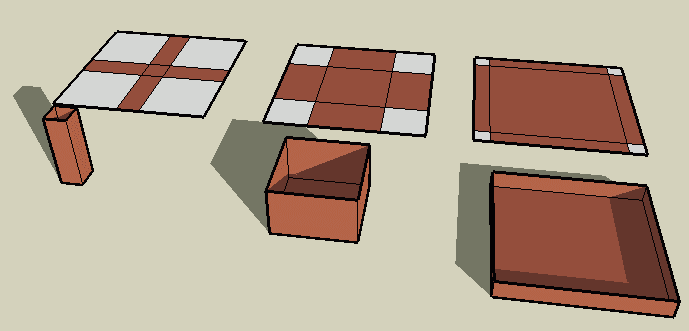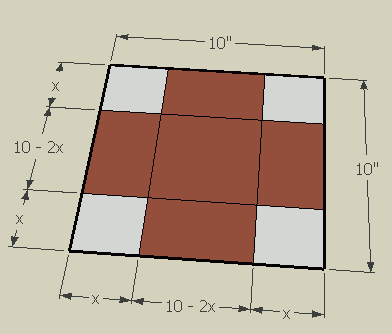| |||
| Math Central | Quandaries & Queries |
|
Question from Rajesh, a student: |
Hi Rajesh.
I am sure you have recognized that a very thin flat box will not hold much volume, and neither will a very tall box with a small base. There must be some value between the extremes that maximizes the volume of the box.

Let's consider this algebraically:
So the volume of the box is its length times width times depth:
Now take the derivative of both sides of this equation with respect to the variable x:
You will need to use the chain rule to solve this. Remember that a really narrow box has a small volume, as does a really thin box, but in between these extremes, we find a maximum volume. This is a critical point, so the derivative at the this point is zero. Thus, all you need to do is solve for x by making dV/dx = 0:
Solve for x.
Cheers,
Stephen La Rocque.
 |
||
Math Central is supported by the University of Regina and The Pacific Institute for the Mathematical Sciences.
